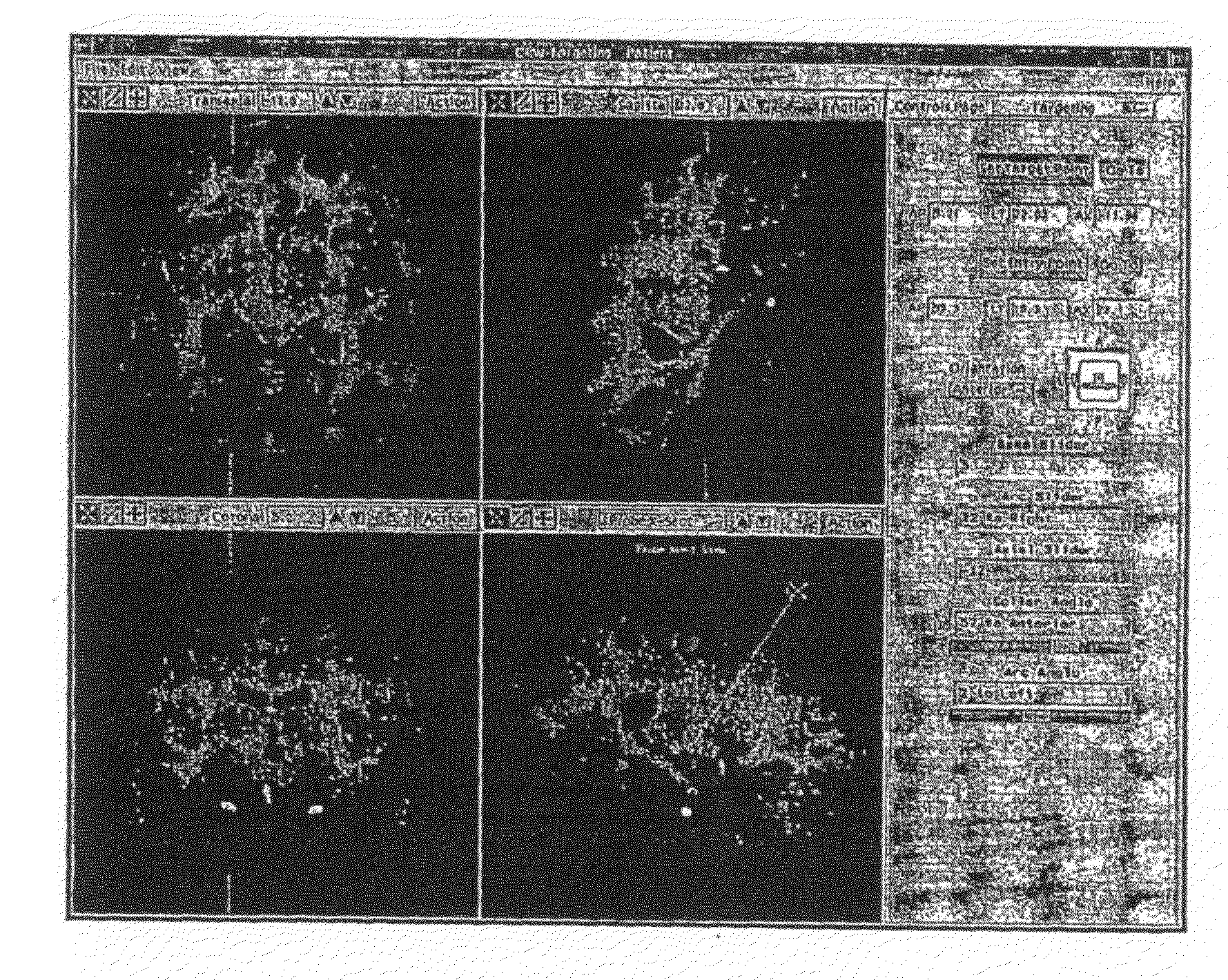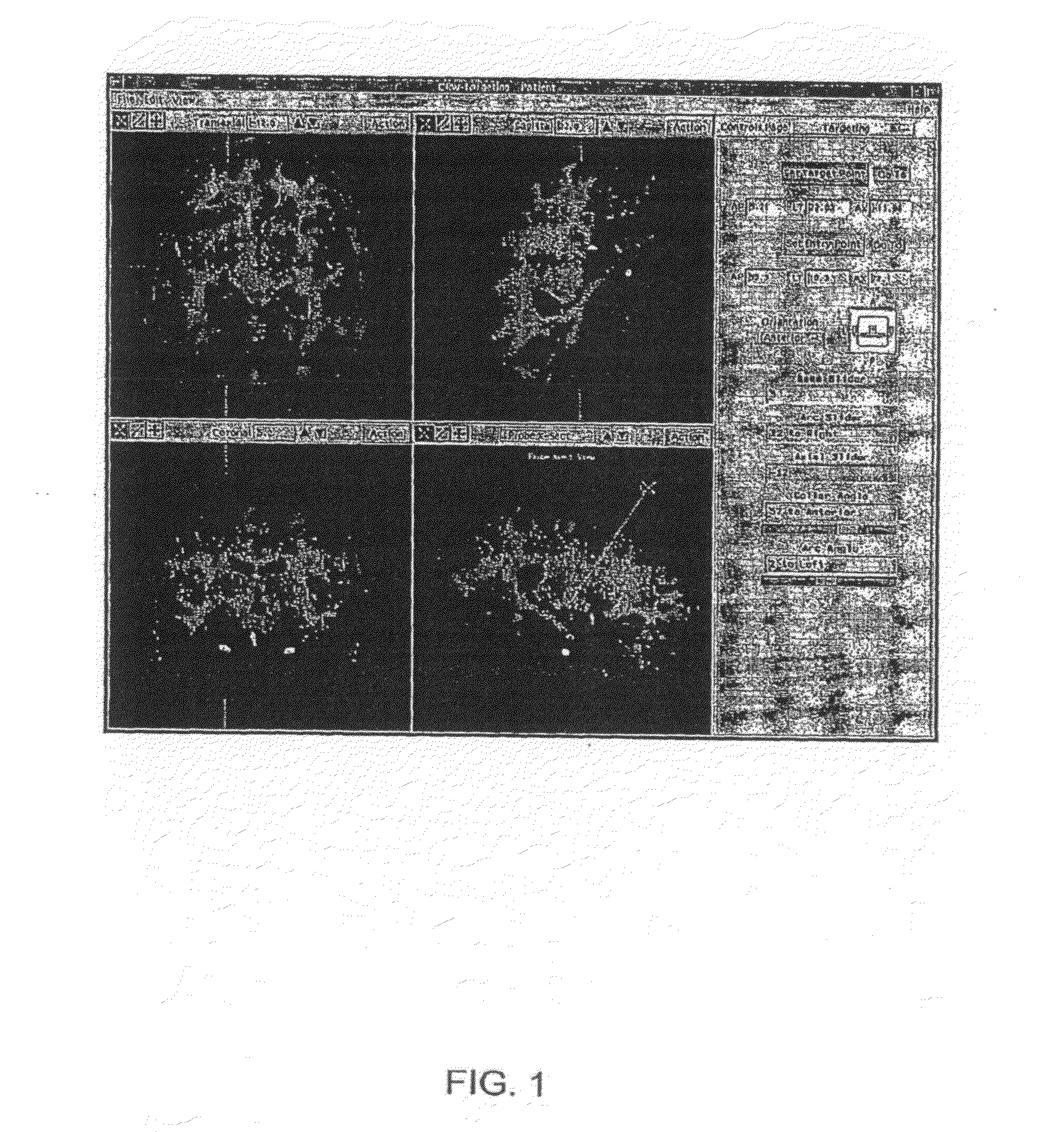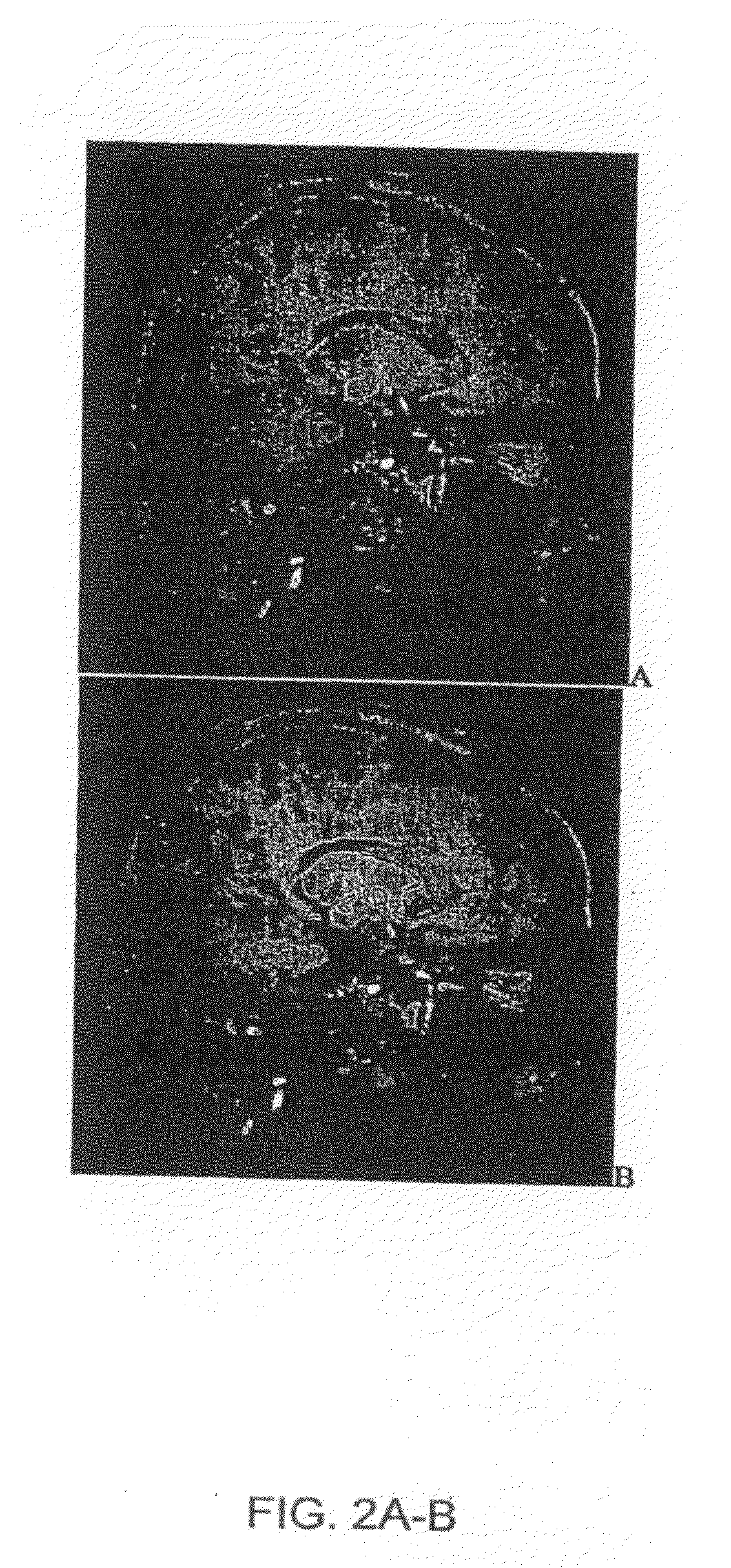Image Guidance System for Deep Brain Stimulation
a brain stimulation and image guidance technology, applied in the field of neurosurgery treatment of neurological diseases and disorders, can solve the problems of inability to define the precise target tissue, lack of information that would allow the surgeon to identify the required tissue function, and limited spatial volume of track data, so as to improve the precision of microelectrode targeting
- Summary
- Abstract
- Description
- Claims
- Application Information
AI Technical Summary
Benefits of technology
Problems solved by technology
Method used
Image
Examples
example 1
Digitized Atlas of Neuroanatomic Structures
[0104]A central component of various systems and embodiments in accordance with the invention is a digitized three-dimensional brain map. This Example describes the development of a digitized version of a printed atlas of neuroanatomy suitable for use in an image guidance system for DBS surgery.
[0105]1.1 Introduction.
[0106]The Schaltenbrand-Bailey atlas has been used exclusively by neurosurgeons so this is the atlas that was chosen to be digitized. The Schaltenbrand-Bailey atlas is based on a study of 11 brains and is a collection of photographed images and contours of macroscopic and microscopic sections. Because only the myelin stained microseries, depicting subcortical structures, was of concern for the creation of the digitized atlas, only two of those 111 brains were of interest for this work.
[0107]The myelin stained microseries is composed of sections from three different cuts, i.e., coronal, sagittal, and axial. The coronal series is...
example 2
Development of a Clinical System for Deep Brain Stimulation
[0133]This Example further describes several novel computer programs suitable for use in positioning stimulation electrodes in an image guided DBS system in accordance with the invention, and the development of a clinical system for DBS, based on these programs.
[0134]2.1 Overview
[0135]A set of computer programs with graphic user interfaces was created in Matlab to implement clinically useful viewing of the atlas and microelectrode data. More specifically, a program, named MRAtlas was created to view MR images with contours of the atlas superimposed on them. Another program named DBS Data Acquisition program was created to intraoperatively obtain microelectrode data for display and plotting purposes. A final program, MicroAtlas, was created to view the acquired microelectrode data on the superimposed atlas contours. These programs together provide a framework for clinical implementation of the improved DBS guidance system, an...
example 3
Evaluation of Clinical System for DBS
[0174]This Example describes methods used to verify the algorithms and systems developed in accordance with the invention.
[0175]3.1 Overview
[0176]The Examples above describe the creation of the systems and development of algorithms used to improve the targeting in DBS. Verification of the algorithms and systems was completed using both qualitative and quantitative methods. The two algorithms that required validation are the atlas creation and microelectrode data matching algorithms. Qualitative verification of the atlas consisted of viewing of the atlas slice-by-slice along the planes of the print atlas, using the Atlas Evaluator program, and using the Atlas Slicer program. The automated microelectrode data matching algorithm results can be viewed using the MicroAtlas program and was subjectively evaluated by comparing to manual matching or form fitting. The results shown in this Example are for analysis of the systems described above.
[0177]3.2 E...
PUM
 Login to View More
Login to View More Abstract
Description
Claims
Application Information
 Login to View More
Login to View More - R&D
- Intellectual Property
- Life Sciences
- Materials
- Tech Scout
- Unparalleled Data Quality
- Higher Quality Content
- 60% Fewer Hallucinations
Browse by: Latest US Patents, China's latest patents, Technical Efficacy Thesaurus, Application Domain, Technology Topic, Popular Technical Reports.
© 2025 PatSnap. All rights reserved.Legal|Privacy policy|Modern Slavery Act Transparency Statement|Sitemap|About US| Contact US: help@patsnap.com



